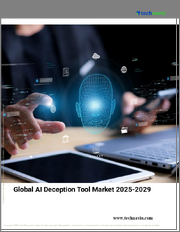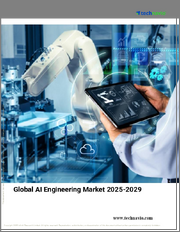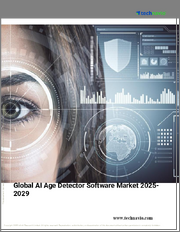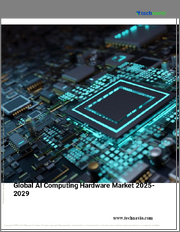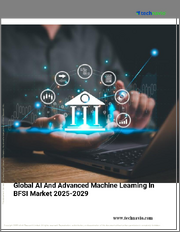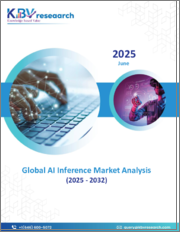
|
시장보고서
상품코드
1768844
세계의 AI 추론 시장 규모, 점유율, 업계 분석 보고서 : 메모리별, 컴퓨트별, 용도별, 최종 용도별, 지역별 전망 및 예측(2025-2032년)Global AI Inference Market Size, Share & Industry Analysis Report By Memory, By Compute, By Application, By End Use, By Regional Outlook and Forecast, 2025 - 2032 |
||||||
세계의 AI 추론 시장 규모는 예측 기간 동안 17.9%의 CAGR로 성장하여 2032년까지 3,495억 3,000만 달러에 달할 것으로 예상됩니다.
KBV Cardinal matrix-AI 추론 시장 경쟁 분석
KBV Cardinal matrix의 분석에 따르면, NVIDIA Corporation, Amazon Web Services, Inc., Google LLC, Microsoft Corporation 및 Apple, Inc.가 시장의 선구자입니다. 2025년 5월, NVIDIA Corporation은 Grace Blackwell 플랫폼을 탑재한 DGX Spark 및 DGX Station 개인용 AI 슈퍼컴퓨터 DGX Spark와 DGX Station을 발표하여 데이터센터 수준의 AI 추론 기능을 데스크톱에 도입했습니다. ASUS, Dell, HP 등 세계 기업들과 협력하여 개발자와 연구자들이 로컬에서 실시간 AI 추론을 실행할 수 있도록 지원하며 시장을 확장하고 있습니다. Samsung Electronics Co., Ltd., Qualcomm Incorporated, Advanced Micro Devices, Inc. 등의 기업들은 시장의 주요 혁신가들 중 일부입니다.
COVID-19 영향 분석
팬데믹 초기에는 불확실성, 공급망 혼란, 예산 제약으로 인해 많은 업계가 기술 투자를 축소했습니다. 진행 중인 많은 프로젝트가 연기되거나 보류되었고, 기업들은 새로운 AI 도입보다 비즈니스 연속성 유지에 집중했습니다. 그 결과, 2020년 시장 성장률은 이전 예측에 비해 둔화되었습니다. 이처럼 COVID-19 팬데믹은 시장에 다소 부정적인 영향을 미쳤습니다.
시장 성장요인
엣지 컴퓨팅과 사물인터넷(IoT) 디바이스의 급속한 확산은 시장을 형성하는 주요 원동력 중 하나입니다. 전 세계가 디지털화됨에 따라 스마트폰, 스마트 카메라, 산업용 센서, 자율주행차 등 수십억 개의 디바이스가 네트워크 엣지에서 방대한 데이터 스트림을 생성하고 있습니다. 기존의 클라우드 기반 AI 처리 모델은 강력하지만, 이 방대한 양의 실시간 정보를 처리할 때 대역폭, 지연 시간, 프라이버시 측면에서 심각한 제약에 직면해 있습니다. 결론적으로, 엣지 컴퓨팅과 AI의 융합은 실시간 분산형 인텔리전스의 전례 없는 가능성을 열어주며, 이 트렌드를 시장 확대의 중요한 원동력으로 확고히 자리매김하고 있습니다.
또한, 시장을 이끄는 또 다른 중요한 원동력은 AI 하드웨어 가속기의 지속적인 발전으로, AI 모델이 점점 더 복잡해짐에 따라 고속 추론 컴퓨팅을 효율적이고 대규모로 실행할 수 있는 전용 하드웨어에 대한 수요가 증가하고 있습니다. 기존 CPU는 범용성이 높지만, 현대 신경망의 특징인 병렬 워크로드에 최적화되어 있지 않습니다. 따라서 AI 하드웨어 가속기의 지속적인 발전은 AI 추론의 경제성, 효율성 및 확장성을 혁신적으로 변화시키고 있으며, 하드웨어 혁신은 이 시장의 성장 궤도에서 초석으로 확고히 자리매김하고 있습니다.
시장 억제요인
그러나 AI 추론 기술의 보급을 가로막는 가장 큰 제약 중 하나는 효율적인 추론 처리에 필요한 고급 하드웨어의 고비용과 복잡성입니다. AI 추론, 특히 딥러닝 모델은 그래픽 처리 장치(GPU), 텐서 처리 장치(TPU), 특수 목적 집적회로(ASIC), 필드 프로그래머블 게이트 어레이(FPGA)와 같은 특수 하드웨어가 필요합니다. (TPU), 주문형 집적회로(ASIC), 필드 프로그래머블 게이트 어레이(FPGA)와 같은 특수한 하드웨어가 필요합니다. 따라서 고급 AI 추론 하드웨어의 엄청난 비용과 복잡성은 전 세계적으로 AI 추론 솔루션의 민주화 및 확장 가능한 도입을 제한하는 큰 제약이 되고 있습니다.
가치사슬 분석
시장의 가치사슬은 AI 알고리즘, 모델 최적화, 하드웨어 효율성 혁신을 추진하는 연구개발(R&D)에서 시작됩니다. 이 단계는 후속 단계의 토대를 마련합니다. 이후 하드웨어 설계 및 제조는 추론 워크로드에 맞게 맞춤화된 전용 칩과 디바이스를 만들어 고성능과 낮은 레이턴시를 보장합니다. 소프트웨어 스택 개발은 AI 모델을 원활하게 실행할 수 있는 도구, 프레임워크 및 API를 사용하여 이러한 하드웨어 구성요소를 지원합니다. 모델 훈련 및 변환 단계에서는 훈련된 모델을 최적화하고 실시간 환경에서 배포하기에 적합한 형태로 변환합니다. 그런 다음 시스템 통합 및 배포를 통해 이러한 모델과 기술이 사용자 환경에 효과적으로 통합됩니다. 유통 및 채널 관리는 전략적 파트너십과 물류를 통해 이러한 솔루션을 시장에 제공하는 데 중요한 역할을 합니다. 이러한 솔루션은 헬스케어, 자동차, 금융 등 산업 전반의 최종사용자 애플리케이션에 사용됩니다. 마지막으로, 애프터 서비스 및 지원은 지속적인 지원과 유지보수를 제공하고, 향후 연구개발에 도움이 되며, 혁신을 유지하기 위한 귀중한 피드백을 생성합니다.
메모리 전망
메모리를 기반으로 시장은 HBM(고대역폭 메모리)과 DDR(더블 데이터 레이트)로 분류되며, DDR(더블 데이터 레이트) 부문은 2024년 시장의 40%의 매출 점유율을 차지했으며, DDR(더블 데이터 레이트) 부문은 시장에서 중요한 위치를 차지하고 있습니다. DDR 메모리는 다양한 AI 애플리케이션에서 폭넓은 가용성, 비용 효율성 및 안정적인 성능으로 유명합니다.
컴퓨트 전망
컴퓨팅을 기반으로 시장은 GPU, CPU, NPU, FPGA, 기타로 분류되며, CPU 부문은 2024년 시장 점유율 29%를 차지했으며, 유연성, 호환성, 접근성의 균형을 갖춘 CPU는 AI 추론 환경에서 여전히 중요한 구성요소로 남을 것입니다. 고도로 전문화된 프로세서와 달리 CPU는 범용 컴퓨팅을 위해 설계되어 다양한 AI 알고리즘과 워크로드를 효율적으로 실행할 수 있습니다.
용도 전망
용도별로 시장은 머신러닝, 생성형 AI, 자연어 처리(NLP), 컴퓨터 비전, 기타로 분류됩니다. 생성형 AI 부문은 2024년 전체 시장 매출의 27%를 차지했습니다. 생성형 AI 부문은 시장의 주요 세력으로 빠르게 부상하고 있습니다. 생성형 AI 기술은 이미지, 텍스트, 음성, 동영상 등 새로운 컨텐츠를 생성할 수 있는 능력을 갖추고 있어 창의적, 상업적, 산업적 응용 분야에서 폭넓은 가능성을 열어줍니다.
최종 용도 전망
최종 사용처에 따라 시장은 IT 및 통신, BFSI, 헬스케어, 소매 및 E-Commerce, 자동차, 제조, 보안, 기타로 분류되며, BFSI 부문에서는 업무 효율성, 리스크 관리 강화, 고객 참여도 향상을 위해 AI 추론이 활용되고 있습니다. AI를 활용한 추론 모델은 부정거래 탐지, 대출 승인 자동화, 실시간 신용점수 산출, 개인화된 금융상품 제공 등을 지원합니다.
지역 전망
지역별로는 북미, 유럽, 아시아태평양, 라틴아메리카, 중동 및 아프리카 등 4개 지역으로 시장을 분석했습니다. 북미는 2024년 시장 매출의 37%를 차지했습니다. 북미는 주요 기술 기업의 존재, AI R&D에 대한 막대한 투자, 강력한 디지털 인프라에 힘입어 시장에서 중요한 지역으로 부상하고 있습니다. 이 지역의 역동적인 혁신 생태계는 헬스케어, 금융, 통신, 자동차 등의 산업에서 첨단 AI 솔루션 도입을 촉진하고 있습니다.
시장 경쟁과 특성
시장은 여전히 치열한 경쟁이 계속되고 있으며, 혁신을 주도하는 스타트업과 중견기업의 수가 증가하고 있습니다. 이들 기업은 시장 점유율을 확보하기 위해 특수 하드웨어, 효율적인 알고리즘, 틈새 애플리케이션에 집중하고 있습니다. 오픈 소스 프레임워크와 낮은 진입장벽은 경쟁을 더욱 격화시켜 헬스케어, 자동차, 금융 등의 산업에서 빠른 기술 발전과 다양한 솔루션의 창출을 촉진하고 있습니다.
목차
제1장 시장 범위와 조사 방법
- 시장 정의
- 목적
- 시장 범위
- 세분화
- 조사 방법
제2장 시장 요람
- 주요 하이라이트
제3장 시장 개요
- 소개
- 개요
- 시장 구성과 시나리오
- 개요
- 시장에 영향을 미치는 주요 요인
- 시장 성장 촉진요인
- 시장 성장 억제요인
- 시장 기회
- 시장 과제
제4장 경쟁 분석 - 세계
- KBV Cardinal Matrix
- 최근 업계 전체의 전략적 전개
- 파트너십, 협업, 계약
- 제품 발매와 제품 확대
- 인수와 합병
- 주요 성공 전략
- 주요 전략
- 주요 전략적 활동
- Porter’s Five Forces 분석
제5장 AI 추론 시장 밸류체인 분석
- 연구개발(R&D) :
- 하드웨어 설계와 제조 :
- 소프트웨어 스택 개발 :
- 모델 트레이닝과 변환 :
- 시스템 통합과 전개 :
- 유통과 채널 관리 :
- 최종사용자 애플리케이션 :
- 애프터서비스와 서포트 :
제6장 AI 추론 시장의 주요 고객 기준
제7장 세계의 AI 추론 시장 : 메모리별
- 세계의 HBM(고대역폭 메모리) 시장 : 지역별
- 세계의 DDR(더블 데이터 레이트) 시장 : 지역별
제8장 세계의 AI 추론 시장 : 컴퓨트별
- 세계의 GPU 시장 : 지역별
- 세계의 CPU 시장 : 지역별
- 세계의 NPU 시장 : 지역별
- 세계의 FPGA 시장 : 지역별
- 세계의 기타 컴퓨트 시장 : 지역별
제9장 세계의 AI 추론 시장 : 용도별
- 세계의 머신러닝 시장 : 지역별
- 세계의 생성형 AI 시장 : 지역별
- 세계의 자연어 처리(NLP) 시장 : 지역별
- 세계의 컴퓨터 비전 시장 : 지역별
- 세계의 기타 용도 시장 : 지역별
제10장 세계의 AI 추론 시장 : 최종 용도별
- 세계의 IT·통신 시장 : 지역별
- 세계의 BFSI 시장 : 지역별
- 세계의 헬스케어 시장 : 지역별
- 세계의 소매·E-Commerce 시장 : 지역별
- 세계의 자동차 시장 : 지역별
- 세계의 제조 시장 : 지역별
- 세계의 보안 시장 : 지역별
- 세계의 기타 최종 용도 시장 : 지역별
제11장 세계의 AI 추론 시장 : 지역별
- 북미
- 북미의 시장 : 국가별
- 미국
- 캐나다
- 멕시코
- 기타 북미
- 북미의 시장 : 국가별
- 유럽
- 유럽의 시장 : 국가별
- 독일
- 영국
- 프랑스
- 러시아
- 스페인
- 이탈리아
- 기타 유럽
- 유럽의 시장 : 국가별
- 아시아태평양
- 아시아태평양의 시장 : 국가별
- 중국
- 일본
- 인도
- 한국
- 싱가포르
- 말레이시아
- 기타 아시아태평양
- 아시아태평양의 시장 : 국가별
- 라틴아메리카, 중동 및 아프리카
- 라틴아메리카, 중동 및 아프리카의 시장 : 국가별
- 브라질
- 아르헨티나
- 아랍에미리트
- 사우디아라비아
- 남아프리카공화국
- 나이지리아
- 기타 라틴아메리카, 중동 및 아프리카
- 라틴아메리카, 중동 및 아프리카의 시장 : 국가별
제12장 기업 개요
- Intel Corporation
- NVIDIA Corporation
- Qualcomm Incorporated(Qualcomm Technologies, Inc)
- Amazon Web Services, Inc(Amazon.com, Inc.)
- Google LLC(Alphabet Inc)
- Huawei Technologies Co, Ltd.(Huawei Investment & Holding Co., Ltd.)
- Microsoft Corporation
- Samsung Electronics Co, Ltd.(Samsung Group)
- Advanced Micro Devices, Inc
- Apple, Inc
제13장 AI 추론 시장 성공 필수 조건
ksm 25.07.22The Global AI Inference Market size is expected to reach $349.53 billion by 2032, rising at a market growth of 17.9% CAGR during the forecast period.
In recent years, the adoption of HBM in AI inference has been characterized by a shift towards more complex and resource-intensive neural networks, necessitating memory solutions that can keep pace with the growing computational demands. HBM's unique ability to provide ultra-high bandwidth while maintaining a compact physical footprint is enabling the deployment of larger models and faster inference times, particularly in data center environments.
The major strategies followed by the market participants are Product Launches as the key developmental strategy to keep pace with the changing demands of end users. For instance, Two news of any two random companies apart from leaders and key innovators. In October, 2024, Advanced Micro Devices, Inc. unveiled Ryzen AI PRO 300 Series processors, delivering up to 55 TOPS of AI performance, which are tailored for enterprise PCs to accelerate on-device AI inference tasks. With advanced NPUs and extended battery life, they support AI-driven features like real-time translation and image generation, marking a significant stride in the market. Additionally, In May, 2025, Intel Corporation unveiled new Arc Pro B60 and B50 GPUs and Gaudi 3 AI accelerators, enhancing AI inference capabilities for workstations and data centers. These advancements offer scalable, cost-effective solutions for professionals and enterprises, strengthening Intel's position in the market.
KBV Cardinal Matrix - AI Inference Market Competition Analysis
Based on the Analysis presented in the KBV Cardinal matrix; NVIDIA Corporation, Amazon Web Services, Inc., Google LLC, Microsoft Corporation, and Apple, Inc. are the forerunners in the Market. In May, 2025, NVIDIA Corporation unveiled DGX Spark and DGX Station personal AI supercomputers, powered by the Grace Blackwell platform, bringing data center-level AI inference capabilities to desktops. Collaborating with global manufacturers like ASUS, Dell, and HP, these systems enable developers and researchers to perform real-time AI inference locally, expanding the market. Companies such as Samsung Electronics Co., Ltd., Qualcomm Incorporated, and Advanced Micro Devices, Inc. are some of the key innovators in Market.
COVID 19 Impact Analysis
During the initial phases of the pandemic, several industries scaled back their technology investments due to uncertainty, supply chain disruptions, and budget constraints. Many ongoing projects were either delayed or put on hold, and companies focused on maintaining business continuity rather than new AI deployments. As a result, the growth rate of the market slowed during 2020, compared to previous forecasts. Thus, the COVUD-19 pandemic had a slightly negative impact on the market.
Market Growth Factors
The rapid proliferation of edge computing and Internet of Things (IoT) devices has become one of the foremost drivers shaping the market. As the world moves towards increased digitalization, billions of devices-from smartphones and smart cameras to industrial sensors and autonomous vehicles-are generating massive streams of data at the edge of networks. Traditional cloud-based AI processing models, while powerful, face critical limitations in bandwidth, latency, and privacy when handling this deluge of real-time information. In conclusion, the convergence of edge computing and AI is unlocking unprecedented potential for real-time, decentralized intelligence, cementing this trend as a pivotal driver for the expansion of the market.
Additionally, another critical driver fueling the market is the continuous advancement in AI hardware accelerators. As AI models become increasingly complex, the demand for specialized hardware capable of executing high-speed inference computations efficiently and at scale has intensified. Traditional CPUs, while versatile, are not optimized for the parallelized workloads characteristic of modern neural networks. Hence, relentless advancements in AI hardware accelerators are transforming the economics, efficiency, and scalability of AI inference, firmly positioning hardware innovation as a cornerstone in the growth trajectory of this market.
Market Restraining Factors
However, one of the most significant restraints hampering the widespread adoption of AI inference technologies is the high cost and complexity associated with advanced hardware required for efficient inference processing. AI inference, especially for deep learning models, demands specialized hardware such as Graphics Processing Units (GPUs), Tensor Processing Units (TPUs), Application-Specific Integrated Circuits (ASICs), and Field-Programmable Gate Arrays (FPGAs). Therefore, the prohibitive cost and complexity of advanced AI inference hardware act as a formidable restraint, restricting the democratization and scalable adoption of AI inference solutions worldwide.
Value Chain Analysis
The value chain of the market begins with Research & Development (R&D), which drives innovation in AI algorithms, model optimization, and hardware efficiency. This stage lays the groundwork for subsequent phases. Following this, Hardware Design & Manufacturing involves creating specialized chips and devices tailored for inference workloads, ensuring high performance and low latency. Software Stack Development supports these hardware components with tools, frameworks, and APIs that enable seamless execution of AI models. In the Model Training & Conversion stage, trained models are optimized and converted into formats suitable for deployment in real-time environments. Next, System Integration & Deployment ensures these models and technologies are embedded effectively into user environments. Distribution & Channel Management plays a critical role in delivering these solutions to the market through strategic partnerships and logistics. These solutions are then used in End-User Applications across industries such as healthcare, automotive, and finance. Finally, After-Sales Services & Support provide ongoing assistance and maintenance, generating valuable feedback that informs future R&D and sustains innovation.
Memory Outlook
Based on memory, the market is characterized into HBM (High Bandwidth Memory) and DDR (Double Data Rate). The DDR (Double Data Rate) segment garnered 40% revenue share in the market in 2024. The DDR (Double Data Rate) segment also holds a significant position in the market. DDR memory is known for its widespread availability, cost-effectiveness, and dependable performance across a broad spectrum of AI applications.
Compute Outlook
On the basis of compute, the market is classified into GPU, CPU, NPU, FPGA, and others. The CPU segment recorded 29% revenue share in the market in 2024. CPUs remain a critical component of the AI inference landscape, offering a balance of flexibility, compatibility, and accessibility. Unlike highly specialized processors, CPUs are designed for general-purpose computing and can efficiently execute a wide range of AI algorithms and workloads.
Application Outlook
By application, the market is divided into machine learning, generative AI, natural language processing (NLP), computer vision, and others. The generative AI segment garnered 27% revenue share in the market in 2024. The generative AI segment is rapidly emerging as a major force in the market. Generative AI technologies are capable of producing new content such as images, text, audio, and video, opening up a wide array of possibilities for creative, commercial, and industrial uses.
End Use Outlook
Based on end use, the market is segmented into IT & Telecommunications, BFSI, healthcare, retail & e-commerce, automotive, manufacturing, security, and others. The BFSI segment acquired 16% revenue share in the market in 2024. The banking, financial services, and insurance (BFSI) sector is increasingly utilizing AI inference to streamline operations, enhance risk management, and improve customer engagement. AI-powered inference models assist in detecting fraudulent transactions, automating loan approvals, enabling real-time credit scoring, and delivering personalized financial products.
Regional Outlook
Region-wise, the market is analyzed across North America, Europe, Asia Pacific, and LAMEA. The North America segment recorded 37% revenue share in the market in 2024. North America stands as a prominent region in the market, supported by the presence of leading technology companies, substantial investment in AI research and development, and robust digital infrastructure. The region's dynamic innovation ecosystem drives the adoption of advanced AI solutions across industries such as healthcare, finance, telecommunications, and automotive.
Market Competition and Attributes
The Market remains highly competitive with a growing number of startups and mid-sized companies driving innovation. These players focus on specialized hardware, efficient algorithms, and niche applications to gain market share. Open-source frameworks and lower entry barriers further intensify competition, fostering rapid technological advancements and diversified solutions across industries like healthcare, automotive, and finance.
Recent Strategies Deployed in the Market
- May-2025: Intel Corporation partnered with NetApp and introduced the AIPod Mini, an integrated AI inferencing solution designed to simplify and accelerate enterprise AI adoption. Targeting departmental and team-level deployments, it offers affordability, scalability, and ease of use, enabling businesses to leverage AI for applications like legal document automation, personalized retail experiences, and manufacturing optimization.
- May-2025: NVIDIA Corporation unveiled NVLink Fusion, enabling industries to build semi-custom AI infrastructures by integrating third-party CPUs and custom AI chips with NVIDIA GPUs. This initiative enhances scalability and performance for AI inference workloads, fostering a flexible ecosystem for advanced AI applications.
- May-2025: Amazon Web Services, Inc. teamed up with HUMAIN and launched the AI Zone, a pioneering initiative to boost AI adoption in Saudi Arabia and worldwide. This collaboration aims to accelerate AI innovation, provide advanced resources, and support businesses in leveraging AI technologies for growth and digital transformation on a global scale.
- May-2025: Microsoft Corporation teamed up with Qualcomm to develop Windows 11 Copilot+ PCs, integrating Qualcomm's Snapdragon X Elite processors featuring dedicated neural processing units (NPUs) capable of over 40 trillion operations per second (TOPS). This collaboration aims to enhance on-device AI inference capabilities, reducing reliance on cloud computing and improving performance and privacy.
- May-2025: Microsoft Corporation teamed up with Hugging Face to boost open-source AI innovation through Azure AI Foundry. This collaboration aims to simplify AI model deployment, enhance developer tools, and accelerate AI solutions adoption, fostering faster, more accessible innovation across industries using open-source technologies on Microsoft's cloud platform.
List of Key Companies Profiled
- Intel Corporation
- NVIDIA Corporation
- Qualcomm Incorporated (Qualcomm Technologies, Inc.)
- Amazon Web Services, Inc. (Amazon.com, Inc.)
- Google LLC (Alphabet Inc.)
- Huawei Technologies Co., Ltd. (Huawei Investment & Holding Co., Ltd.)
- Microsoft Corporation
- Samsung Electronics Co., Ltd. (Samsung Group)
- Advanced Micro Devices, Inc.
- Apple, Inc.
Global AI Inference Market Report Segmentation
By Memory
- HBM (High Bandwidth Memory)
- DDR (Double Data Rate)
By Compute
- GPU
- CPU
- NPU
- FPGA
- Other Compute
By Application
- Machine Learning
- Generative AI
- Natural Language Processing (NLP)
- Computer Vision
- Other Application
By End Use
- IT & Telecommunications
- BFSI
- Healthcare
- Retail & E-commerce
- Automotive
- Manufacturing
- Security
- Other End Use
By Geography
- North America
- US
- Canada
- Mexico
- Rest of North America
- Europe
- Germany
- UK
- France
- Russia
- Spain
- Italy
- Rest of Europe
- Asia Pacific
- China
- Japan
- India
- South Korea
- Singapore
- Malaysia
- Rest of Asia Pacific
- LAMEA
- Brazil
- Argentina
- UAE
- Saudi Arabia
- South Africa
- Nigeria
- Rest of LAMEA
Table of Contents
Chapter 1. Market Scope & Methodology
- 1.1 Market Definition
- 1.2 Objectives
- 1.3 Market Scope
- 1.4 Segmentation
- 1.4.1 Global AI Inference Market, by Memory
- 1.4.2 Global AI Inference Market, by Compute
- 1.4.3 Global AI Inference Market, by Application
- 1.4.4 Global AI Inference Market, by End Use
- 1.4.5 Global AI Inference Market, by Geography
- 1.5 Methodology for the research
Chapter 2. Market at a Glance
- 2.1 Key Highlights
Chapter 3. Market Overview
- 3.1 Introduction
- 3.1.1 Overview
- 3.1.1.1 Market Composition and Scenario
- 3.1.1 Overview
- 3.2 Key Factors Impacting the Market
- 3.2.1 Market Drivers
- 3.2.2 Market Restraints
- 3.2.3 Market Opportunities
- 3.2.4 Market Challenges
Chapter 4. Competition Analysis - Global
- 4.1 KBV Cardinal Matrix
- 4.2 Recent Industry Wide Strategic Developments
- 4.2.1 Partnerships, Collaborations and Agreements
- 4.2.2 Product Launches and Product Expansions
- 4.2.3 Acquisition and Mergers
- 4.3 Top Winning Strategies
- 4.3.1 Key Leading Strategies: Percentage Distribution (2021-2025)
- 4.3.2 Key Strategic Move: (Product Launches and Product Expansions: 2023, Mar - 2025, May) Leading Players
- 4.4 Porter Five Forces Analysis
Chapter 5. Value Chain Analysis of AI Inference Market
- 5.1 Research & Development (R&D):
- 5.2 Hardware Design & Manufacturing:
- 5.3 Software Stack Development:
- 5.4 Model Training & Conversion:
- 5.5 System Integration & Deployment:
- 5.6 Distribution & Channel Management:
- 5.7 End-User Applications:
- 5.8 After-Sales Services & Support:
Chapter 6. Key Costumer Criteria of AI Inference Market
Chapter 7. Global AI Inference Market by Memory
- 7.1 Global HBM (High Bandwidth Memory) Market by Region
- 7.2 Global DDR (Double Data Rate) Market by Region
Chapter 8. Global AI Inference Market by Compute
- 8.1 Global GPU Market by Region
- 8.2 Global CPU Market by Region
- 8.3 Global NPU Market by Region
- 8.4 Global FPGA Market by Region
- 8.5 Global Other Compute Market by Region
Chapter 9. Global AI Inference Market by Application
- 9.1 Global Machine Learning Market by Region
- 9.2 Global Generative AI Market by Region
- 9.3 Global Natural Language Processing (NLP) Market by Region
- 9.4 Global Computer Vision Market by Region
- 9.5 Global Other Application Market by Region
Chapter 10. Global AI Inference Market by End Use
- 10.1 Global IT & Telecommunications Market by Region
- 10.2 Global BFSI Market by Region
- 10.3 Global Healthcare Market by Region
- 10.4 Global Retail & E-commerce Market by Region
- 10.5 Global Automotive Market by Region
- 10.6 Global Manufacturing Market by Region
- 10.7 Global Security Market by Region
- 10.8 Global Other End Use Market by Region
Chapter 11. Global AI Inference Market by Region
- 11.1 North America AI Inference Market
- 11.1.1 North America AI Inference Market by Memory
- 11.1.1.1 North America HBM (High Bandwidth Memory) Market by Region
- 11.1.1.2 North America DDR (Double Data Rate) Market by Region
- 11.1.2 North America AI Inference Market by Compute
- 11.1.2.1 North America GPU Market by Country
- 11.1.2.2 North America CPU Market by Country
- 11.1.2.3 North America NPU Market by Country
- 11.1.2.4 North America FPGA Market by Country
- 11.1.2.5 North America Other Compute Market by Country
- 11.1.3 North America AI Inference Market by Application
- 11.1.3.1 North America Machine Learning Market by Country
- 11.1.3.2 North America Generative AI Market by Country
- 11.1.3.3 North America Natural Language Processing (NLP) Market by Country
- 11.1.3.4 North America Computer Vision Market by Country
- 11.1.3.5 North America Other Application Market by Country
- 11.1.4 North America AI Inference Market by End Use
- 11.1.4.1 North America IT & Telecommunications Market by Country
- 11.1.4.2 North America BFSI Market by Country
- 11.1.4.3 North America Healthcare Market by Country
- 11.1.4.4 North America Retail & E-commerce Market by Country
- 11.1.4.5 North America Automotive Market by Country
- 11.1.4.6 North America Manufacturing Market by Country
- 11.1.4.7 North America Security Market by Country
- 11.1.4.8 North America Other End Use Market by Country
- 11.1.5 North America AI Inference Market by Country
- 11.1.5.1 US AI Inference Market
- 11.1.5.1.1 US AI Inference Market by Memory
- 11.1.5.1.2 US AI Inference Market by Compute
- 11.1.5.1.3 US AI Inference Market by Application
- 11.1.5.1.4 US AI Inference Market by End Use
- 11.1.5.2 Canada AI Inference Market
- 11.1.5.2.1 Canada AI Inference Market by Memory
- 11.1.5.2.2 Canada AI Inference Market by Compute
- 11.1.5.2.3 Canada AI Inference Market by Application
- 11.1.5.2.4 Canada AI Inference Market by End Use
- 11.1.5.3 Mexico AI Inference Market
- 11.1.5.3.1 Mexico AI Inference Market by Memory
- 11.1.5.3.2 Mexico AI Inference Market by Compute
- 11.1.5.3.3 Mexico AI Inference Market by Application
- 11.1.5.3.4 Mexico AI Inference Market by End Use
- 11.1.5.4 Rest of North America AI Inference Market
- 11.1.5.4.1 Rest of North America AI Inference Market by Memory
- 11.1.5.4.2 Rest of North America AI Inference Market by Compute
- 11.1.5.4.3 Rest of North America AI Inference Market by Application
- 11.1.5.4.4 Rest of North America AI Inference Market by End Use
- 11.1.5.1 US AI Inference Market
- 11.1.1 North America AI Inference Market by Memory
- 11.2 Europe AI Inference Market
- 11.2.1 Europe AI Inference Market by Memory
- 11.2.1.1 Europe HBM (High Bandwidth Memory) Market by Country
- 11.2.1.2 Europe DDR (Double Data Rate) Market by Country
- 11.2.2 Europe AI Inference Market by Compute
- 11.2.2.1 Europe GPU Market by Country
- 11.2.2.2 Europe CPU Market by Country
- 11.2.2.3 Europe NPU Market by Country
- 11.2.2.4 Europe FPGA Market by Country
- 11.2.2.5 Europe Other Compute Market by Country
- 11.2.3 Europe AI Inference Market by Application
- 11.2.3.1 Europe Machine Learning Market by Country
- 11.2.3.2 Europe Generative AI Market by Country
- 11.2.3.3 Europe Natural Language Processing (NLP) Market by Country
- 11.2.3.4 Europe Computer Vision Market by Country
- 11.2.3.5 Europe Other Application Market by Country
- 11.2.4 Europe AI Inference Market by End Use
- 11.2.4.1 Europe IT & Telecommunications Market by Country
- 11.2.4.2 Europe BFSI Market by Country
- 11.2.4.3 Europe Healthcare Market by Country
- 11.2.4.4 Europe Retail & E-commerce Market by Country
- 11.2.4.5 Europe Automotive Market by Country
- 11.2.4.6 Europe Manufacturing Market by Country
- 11.2.4.7 Europe Security Market by Country
- 11.2.4.8 Europe Other End Use Market by Country
- 11.2.5 Europe AI Inference Market by Country
- 11.2.5.1 Germany AI Inference Market
- 11.2.5.1.1 Germany AI Inference Market by Memory
- 11.2.5.1.2 Germany AI Inference Market by Compute
- 11.2.5.1.3 Germany AI Inference Market by Application
- 11.2.5.1.4 Germany AI Inference Market by End Use
- 11.2.5.2 UK AI Inference Market
- 11.2.5.2.1 UK AI Inference Market by Memory
- 11.2.5.2.2 UK AI Inference Market by Compute
- 11.2.5.2.3 UK AI Inference Market by Application
- 11.2.5.2.4 UK AI Inference Market by End Use
- 11.2.5.3 France AI Inference Market
- 11.2.5.3.1 France AI Inference Market by Memory
- 11.2.5.3.2 France AI Inference Market by Compute
- 11.2.5.3.3 France AI Inference Market by Application
- 11.2.5.3.4 France AI Inference Market by End Use
- 11.2.5.4 Russia AI Inference Market
- 11.2.5.4.1 Russia AI Inference Market by Memory
- 11.2.5.4.2 Russia AI Inference Market by Compute
- 11.2.5.4.3 Russia AI Inference Market by Application
- 11.2.5.4.4 Russia AI Inference Market by End Use
- 11.2.5.5 Spain AI Inference Market
- 11.2.5.5.1 Spain AI Inference Market by Memory
- 11.2.5.5.2 Spain AI Inference Market by Compute
- 11.2.5.5.3 Spain AI Inference Market by Application
- 11.2.5.5.4 Spain AI Inference Market by End Use
- 11.2.5.6 Italy AI Inference Market
- 11.2.5.6.1 Italy AI Inference Market by Memory
- 11.2.5.6.2 Italy AI Inference Market by Compute
- 11.2.5.6.3 Italy AI Inference Market by Application
- 11.2.5.6.4 Italy AI Inference Market by End Use
- 11.2.5.7 Rest of Europe AI Inference Market
- 11.2.5.7.1 Rest of Europe AI Inference Market by Memory
- 11.2.5.7.2 Rest of Europe AI Inference Market by Compute
- 11.2.5.7.3 Rest of Europe AI Inference Market by Application
- 11.2.5.7.4 Rest of Europe AI Inference Market by End Use
- 11.2.5.1 Germany AI Inference Market
- 11.2.1 Europe AI Inference Market by Memory
- 11.3 Asia Pacific AI Inference Market
- 11.3.1 Asia Pacific AI Inference Market by Memory
- 11.3.1.1 Asia Pacific HBM (High Bandwidth Memory) Market by Country
- 11.3.1.2 Asia Pacific DDR (Double Data Rate) Market by Country
- 11.3.2 Asia Pacific AI Inference Market by Compute
- 11.3.2.1 Asia Pacific GPU Market by Country
- 11.3.2.2 Asia Pacific CPU Market by Country
- 11.3.2.3 Asia Pacific NPU Market by Country
- 11.3.2.4 Asia Pacific FPGA Market by Country
- 11.3.2.5 Asia Pacific Other Compute Market by Country
- 11.3.3 Asia Pacific AI Inference Market by Application
- 11.3.3.1 Asia Pacific Machine Learning Market by Country
- 11.3.3.2 Asia Pacific Generative AI Market by Country
- 11.3.3.3 Asia Pacific Natural Language Processing (NLP) Market by Country
- 11.3.3.4 Asia Pacific Computer Vision Market by Country
- 11.3.3.5 Asia Pacific Other Application Market by Country
- 11.3.4 Asia Pacific AI Inference Market by End Use
- 11.3.4.1 Asia Pacific IT & Telecommunications Market by Country
- 11.3.4.2 Asia Pacific BFSI Market by Country
- 11.3.4.3 Asia Pacific Healthcare Market by Country
- 11.3.4.4 Asia Pacific Retail & E-commerce Market by Country
- 11.3.4.5 Asia Pacific Automotive Market by Country
- 11.3.4.6 Asia Pacific Manufacturing Market by Country
- 11.3.4.7 Asia Pacific Security Market by Country
- 11.3.4.8 Asia Pacific Other End Use Market by Country
- 11.3.5 Asia Pacific AI Inference Market by Country
- 11.3.5.1 China AI Inference Market
- 11.3.5.1.1 China AI Inference Market by Memory
- 11.3.5.1.2 China AI Inference Market by Compute
- 11.3.5.1.3 China AI Inference Market by Application
- 11.3.5.1.4 China AI Inference Market by End Use
- 11.3.5.2 Japan AI Inference Market
- 11.3.5.2.1 Japan AI Inference Market by Memory
- 11.3.5.2.2 Japan AI Inference Market by Compute
- 11.3.5.2.3 Japan AI Inference Market by Application
- 11.3.5.2.4 Japan AI Inference Market by End Use
- 11.3.5.3 India AI Inference Market
- 11.3.5.3.1 India AI Inference Market by Memory
- 11.3.5.3.2 India AI Inference Market by Compute
- 11.3.5.3.3 India AI Inference Market by Application
- 11.3.5.3.4 India AI Inference Market by End Use
- 11.3.5.4 South Korea AI Inference Market
- 11.3.5.4.1 South Korea AI Inference Market by Memory
- 11.3.5.4.2 South Korea AI Inference Market by Compute
- 11.3.5.4.3 South Korea AI Inference Market by Application
- 11.3.5.4.4 South Korea AI Inference Market by End Use
- 11.3.5.5 Singapore AI Inference Market
- 11.3.5.5.1 Singapore AI Inference Market by Memory
- 11.3.5.5.2 Singapore AI Inference Market by Compute
- 11.3.5.5.3 Singapore AI Inference Market by Application
- 11.3.5.5.4 Singapore AI Inference Market by End Use
- 11.3.5.6 Malaysia AI Inference Market
- 11.3.5.6.1 Malaysia AI Inference Market by Memory
- 11.3.5.6.2 Malaysia AI Inference Market by Compute
- 11.3.5.6.3 Malaysia AI Inference Market by Application
- 11.3.5.6.4 Malaysia AI Inference Market by End Use
- 11.3.5.7 Rest of Asia Pacific AI Inference Market
- 11.3.5.7.1 Rest of Asia Pacific AI Inference Market by Memory
- 11.3.5.7.2 Rest of Asia Pacific AI Inference Market by Compute
- 11.3.5.7.3 Rest of Asia Pacific AI Inference Market by Application
- 11.3.5.7.4 Rest of Asia Pacific AI Inference Market by End Use
- 11.3.5.1 China AI Inference Market
- 11.3.1 Asia Pacific AI Inference Market by Memory
- 11.4 LAMEA AI Inference Market
- 11.4.1 LAMEA AI Inference Market by Memory
- 11.4.1.1 LAMEA HBM (High Bandwidth Memory) Market by Country
- 11.4.1.2 LAMEA DDR (Double Data Rate) Market by Country
- 11.4.2 LAMEA AI Inference Market by Compute
- 11.4.2.1 LAMEA GPU Market by Country
- 11.4.2.2 LAMEA CPU Market by Country
- 11.4.2.3 LAMEA NPU Market by Country
- 11.4.2.4 LAMEA FPGA Market by Country
- 11.4.2.5 LAMEA Other Compute Market by Country
- 11.4.3 LAMEA AI Inference Market by Application
- 11.4.3.1 LAMEA Machine Learning Market by Country
- 11.4.3.2 LAMEA Generative AI Market by Country
- 11.4.3.3 LAMEA Natural Language Processing (NLP) Market by Country
- 11.4.3.4 LAMEA Computer Vision Market by Country
- 11.4.3.5 LAMEA Other Application Market by Country
- 11.4.4 LAMEA AI Inference Market by End Use
- 11.4.4.1 LAMEA IT & Telecommunications Market by Country
- 11.4.4.2 LAMEA BFSI Market by Country
- 11.4.4.3 LAMEA Healthcare Market by Country
- 11.4.4.4 LAMEA Retail & E-commerce Market by Country
- 11.4.4.5 LAMEA Automotive Market by Country
- 11.4.4.6 LAMEA Manufacturing Market by Country
- 11.4.4.7 LAMEA Security Market by Country
- 11.4.4.8 LAMEA Other End Use Market by Country
- 11.4.5 LAMEA AI Inference Market by Country
- 11.4.5.1 Brazil AI Inference Market
- 11.4.5.1.1 Brazil AI Inference Market by Memory
- 11.4.5.1.2 Brazil AI Inference Market by Compute
- 11.4.5.1.3 Brazil AI Inference Market by Application
- 11.4.5.1.4 Brazil AI Inference Market by End Use
- 11.4.5.2 Argentina AI Inference Market
- 11.4.5.2.1 Argentina AI Inference Market by Memory
- 11.4.5.2.2 Argentina AI Inference Market by Compute
- 11.4.5.2.3 Argentina AI Inference Market by Application
- 11.4.5.2.4 Argentina AI Inference Market by End Use
- 11.4.5.3 UAE AI Inference Market
- 11.4.5.3.1 UAE AI Inference Market by Memory
- 11.4.5.3.2 UAE AI Inference Market by Compute
- 11.4.5.3.3 UAE AI Inference Market by Application
- 11.4.5.3.4 UAE AI Inference Market by End Use
- 11.4.5.4 Saudi Arabia AI Inference Market
- 11.4.5.4.1 Saudi Arabia AI Inference Market by Memory
- 11.4.5.4.2 Saudi Arabia AI Inference Market by Compute
- 11.4.5.4.3 Saudi Arabia AI Inference Market by Application
- 11.4.5.4.4 Saudi Arabia AI Inference Market by End Use
- 11.4.5.5 South Africa AI Inference Market
- 11.4.5.5.1 South Africa AI Inference Market by Memory
- 11.4.5.5.2 South Africa AI Inference Market by Compute
- 11.4.5.5.3 South Africa AI Inference Market by Application
- 11.4.5.5.4 South Africa AI Inference Market by End Use
- 11.4.5.6 Nigeria AI Inference Market
- 11.4.5.6.1 Nigeria AI Inference Market by Memory
- 11.4.5.6.2 Nigeria AI Inference Market by Compute
- 11.4.5.6.3 Nigeria AI Inference Market by Application
- 11.4.5.6.4 Nigeria AI Inference Market by End Use
- 11.4.5.7 Rest of LAMEA AI Inference Market
- 11.4.5.7.1 Rest of LAMEA AI Inference Market by Memory
- 11.4.5.7.2 Rest of LAMEA AI Inference Market by Compute
- 11.4.5.7.3 Rest of LAMEA AI Inference Market by Application
- 11.4.5.7.4 Rest of LAMEA AI Inference Market by End Use
- 11.4.5.1 Brazil AI Inference Market
- 11.4.1 LAMEA AI Inference Market by Memory
Chapter 12. Company Profiles
- 12.1 Intel Corporation
- 12.1.1 Company Overview
- 12.1.2 Financial Analysis
- 12.1.3 Segmental and Regional Analysis
- 12.1.4 Research & Development Expenses
- 12.1.5 Recent strategies and developments:
- 12.1.5.1 Partnerships, Collaborations, and Agreements:
- 12.1.5.2 Product Launches and Product Expansions:
- 12.1.6 SWOT Analysis
- 12.2 NVIDIA Corporation
- 12.2.1 Company Overview
- 12.2.2 Financial Analysis
- 12.2.3 Segmental and Regional Analysis
- 12.2.4 Research & Development Expenses
- 12.2.5 Recent strategies and developments:
- 12.2.5.1 Partnerships, Collaborations, and Agreements:
- 12.2.5.2 Product Launches and Product Expansions:
- 12.2.6 SWOT Analysis
- 12.3 Qualcomm Incorporated (Qualcomm Technologies, Inc.)
- 12.3.1 Company Overview
- 12.3.2 Financial Analysis
- 12.3.3 Segmental and Regional Analysis
- 12.3.4 Research & Development Expense
- 12.3.5 Recent strategies and developments:
- 12.3.5.1 Partnerships, Collaborations, and Agreements:
- 12.3.5.2 Product Launches and Product Expansions:
- 12.3.6 SWOT Analysis
- 12.4 Amazon Web Services, Inc. (Amazon.com, Inc.)
- 12.4.1 Company Overview
- 12.4.2 Financial Analysis
- 12.4.3 Segmental and Regional Analysis
- 12.4.4 Recent strategies and developments:
- 12.4.4.1 Partnerships, Collaborations, and Agreements:
- 12.4.4.2 Product Launches and Product Expansions:
- 12.4.4.3 Acquisition and Mergers:
- 12.4.5 SWOT Analysis
- 12.5 Google LLC (Alphabet Inc.)
- 12.5.1 Company Overview
- 12.5.2 Financial Analysis
- 12.5.3 Segmental and Regional Analysis
- 12.5.4 Research & Development Expenses
- 12.5.5 Recent strategies and developments:
- 12.5.5.1 Partnerships, Collaborations, and Agreements:
- 12.5.5.2 Product Launches and Product Expansions:
- 12.5.6 SWOT Analysis
- 12.6 Huawei Technologies Co., Ltd. (Huawei Investment & Holding Co., Ltd.)
- 12.6.1 Company Overview
- 12.6.2 Financial Analysis
- 12.6.3 Segmental and Regional Analysis
- 12.6.4 Research & Development Expenses
- 12.6.5 Recent strategies and developments:
- 12.6.5.1 Product Launches and Product Expansions:
- 12.6.6 SWOT Analysis
- 12.7 Microsoft Corporation
- 12.7.1 Company Overview
- 12.7.2 Financial Analysis
- 12.7.3 Segmental and Regional Analysis
- 12.7.4 Research & Development Expenses
- 12.7.5 Recent strategies and developments:
- 12.7.5.1 Partnerships, Collaborations, and Agreements:
- 12.7.6 SWOT Analysis
- 12.8 Samsung Electronics Co., Ltd. (Samsung Group)
- 12.8.1 Company Overview
- 12.8.2 Financial Analysis
- 12.8.3 Segmental and Regional Analysis
- 12.8.4 Research & Development Expenses
- 12.8.5 Recent strategies and developments:
- 12.8.5.1 Partnerships, Collaborations, and Agreements:
- 12.8.6 SWOT Analysis
- 12.9 Advanced Micro Devices, Inc.
- 12.9.1 Company Overview
- 12.9.2 Financial Analysis
- 12.9.3 Segmental and Regional Analysis
- 12.9.4 Research & Development Expenses
- 12.9.5 Recent strategies and developments:
- 12.9.5.1 Partnerships, Collaborations, and Agreements:
- 12.9.5.2 Product Launches and Product Expansions:
- 12.9.5.3 Acquisition and Mergers:
- 12.10. Apple, Inc.
- 12.10.1 Company Overview
- 12.10.2 Financial Analysis
- 12.10.3 Regional Analysis
- 12.10.4 Research & Development Expense
- 12.10.5 Recent strategies and developments:
- 12.10.5.1 Product Launches and Product Expansions:
- 12.10.6 SWOT Analysis








